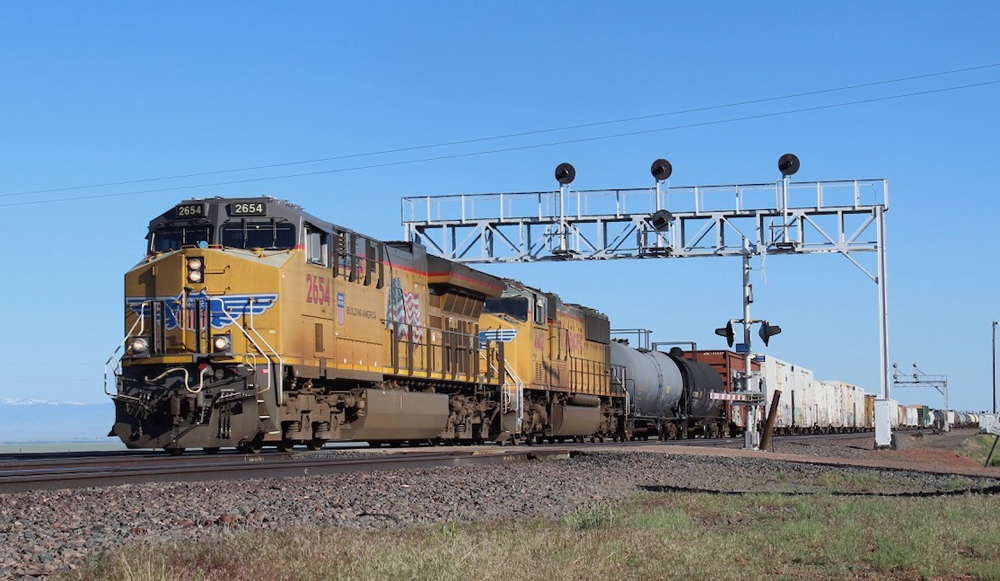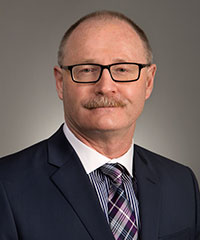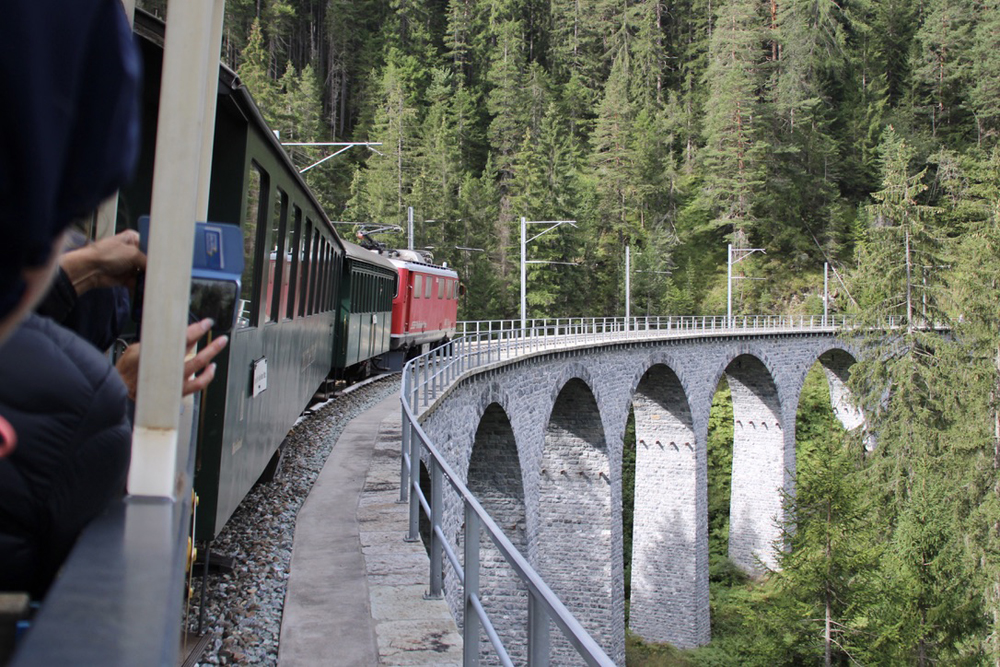
Precision Scheduled Railroading has become a target for members of Congress, federal regulators, shippers, and rail labor. Hunter Harrison’s low-cost operating model — in place on all of the Class I railroads except BNSF Railway — has come under criticism as rail traffic has rebounded from pandemic lows.
Intermodal terminals faced monumental congestion this summer. Carload shippers have complained about poor service, particularly on CSX Transportation and Norfolk Southern, which are both short of train crews. And some people in high places, including Surface Transportation Board Chairman Martin J. Oberman, have questioned whether railroads have cut their workforces too deeply over the past five years.
About the only people happy with railroads are investors, who have cheered lower operating ratios, higher profits, and rising stock prices.

But Tony Marquis, who held high-ranking operating positions at the Harrison-led Canadian National and Canadian Pacific, says PSR is getting a bad rap. “I don’t think it’s fair at all,” he says. “They are trying to blame the railroads and PSR for a worldwide logistics problem.”
The bigger issue, Marquis says, is that CSX, NS, and Union Pacific have not yet gotten their PSR makeovers quite right. “The one thing people miss about PSR is it’s a culture change. It’s not just an operating change,” says Marquis, who retired as senior vice president of operations for CP’s Eastern Region in 2019 and is now a consultant. “And that’s probably the biggest miss that I see from those that are trying to implement it and are struggling.”
It’s critical, Marquis says, that the entire company understands PSR and buys in. “It’s not about cutting costs. It’s not about making sure the shareholders get rich. It truly is about being the lowest-cost, best service provider. It is a full-scale culture change,” Marquis says.
Somehow that message has gotten lost, Marquis says, and the U.S. Class I systems need to explain the “why” of PSR to employees, customers, regulators, and lawmakers. Marquis says he learned that lesson the hard way at CP, where a fast implementation of PSR left little time for explanations. Later, though, Marquis and the other operations senior vice presidents would spend two or three days each month conducting leadership sessions with CP’s operating people. Standards, goals, and expectations were set, and PSR operations were explained, he says. These sessions ultimately were expanded to all departments at CP.
A PSR railroad streamlines its operations, pre-blocks traffic at origin, and bypasses intermediate switching as much as possible. Moving traffic in fewer but longer trains allows a railroad to reduce the size of its locomotive and car fleets, which in turn allows the railroad to operate with fewer train crews and far smaller locomotive and carshop workforces. Most importantly, Marquis says, there is an operating discipline to run to the schedule for all functions. This includes track maintenance windows, inspectors, intermodal yard employees, and train crews. “Scheduling allows for optimization,” he says.
And what of job losses? The U.S. PSR railroads have, on average, eliminated 25% of their workforce since 2017. “It does have an immediate impact that is bothersome,” Marquis says. “But it means that you can become a low-cost, high-service provider – which means you’re going to get more business and then more jobs.”
CP, he notes, has led the industry in growth since 2017 and now has more operating employees than it did before Harrison arrived in 2012, but far fewer headquarters employees. “And that’s what you want,” Marquis says.
The STB’s Oberman has criticized the big U.S. PSR systems and questioned whether they are shirking their common carrier obligations to accept all kinds of traffic. Marquis says railroads shouldn’t be saddled with unprofitable business and notes that Class I systems have been demarketing traffic for years when it didn’t make sense, like rumbling down a 10-mile branch to retrieve two hoppers of grain.

Instead, PSR systems work with customers that fit the railroad’s operating model so they can grow together, Marquis says. PSR gets the railroad and its customers thinking differently, such as converting some carload traffic to intermodal or shifting to a unit grain train model involving loop tracks at both origin and destination that can handle 8,500-foot trains that don’t require switching. “Customers also benefit with faster cycle times — they can reduce highly expensive railcar leasing costs and schedule their own operations to optimize their assets,” Marquis says.
“The growth model is based on capacity and service, built on understanding the customers’ needs and the operating plan that optimizes the network where all assets are accounted for, from passing siding capacity to the number of locomotives and crews needed to bring on new business,” Marquis says. “It is a partnership with the customers and understanding volume levels and service delivery expectations in exchange for the railroad making capacity investments to support the new traffic. Customers are willing to make a commitment if CP is willing to make a commitment. That’s pretty fair.”
All PSR railroads can grow in this way, Marquis says. “When traffic fits the model, the customer wins and you win,” he says.
You can reach Bill Stephens at bybillstephens@gmail.com and follow him on LinkedIn and Twitter @bybillstephens














FEC is doing it correctly. Soth of Cocoa all the industrial spurs off the main line are being changed. Instead, it is using the old main line as a long siding. That way the 2 main line tracks to the east are not subject to delays with a peddler serving all these business spurs. That is a way to grow customers and yet run manifest trains PSR style.
Tony Marquis isn’t saying anything new. He seems to be saying PSR isn’t working completely and correctly because of the lack of culture change. He said EVP’s spent 2-3 days a month explaining to “operating people”. Who are the operating people? Management? Or Train & Engine? Tony Marquis’ whole message here’s fatal flaw seems to be that he thinks T&E crews are going to change their culture IF they just understood PSR properly.
That whole “bothersome” 25% reduction in jobs…train crews are NEVER going to accept any of this PSR stuff on the proviso that a whole bunch of folks are losing their jobs for awhile but there’s a chance, if things go well, the jobs will return.
this guy has never idea what he’s talking about other than its all about the share holder and the customer means nothing. PSR is not a one size fits all. but its definitely about getting rid of business including profitable business,, and employees. its not a sustainable operating plan. I watched a class one give up a 10000 car a year profitable move because it wasn’t profitable enough, and it continues to operate a branch line that looses thousands of dollars a month, figure that one out. the service on all the class ones continues to gets worse. the stuff I see as a 30 year railroader would blow your mind!
Spoken like a true manager that gets his bonuses based upon performance which means cut costs and increase dividends. Customers get late deliveries and then get more deliveries than they can handle. The customer then gets hit with surcharges. Customers get hit often enough and they switch to all truck delivery. Spin off railroads deliver great service to the customer then the PSR railroad fails to deliver the train so the customer gets frustrated and also goes to trucking. The investors care only about increasing dividends no matter what it takes. As a manager the only thing that matters is “An increase in investor equity no matter what it takes.”
If PSR were real, Amtrak would be on time over the Class I’s. Amtrak has (or had) published schedules so making the time points would be easy.
True PSR sounds more like EL’s NY-100 and 2nd NY-100, or Readings fleet of early AM Eastward freights. They had to make their ramp times.
“But it means that you can become a low-cost, high-service provider – which means you’re going to get more business and then more jobs.”
This is incorrect. All the entities embracing PSR have not seen growth. They have upset their customers first and forced them into trucks or make expensive upgrades to their private sidings. And it was done in a top-down, non customer focused manner.
PSR makes it harder to run steam excursions on class 1’s because steam excursions are just an extra expense and a liability. PSR is a cut to the bone mentality and any kind of frivolous activity is frowned upon. But, UP can run Big Boy and occasional expensive excursions for the rich.
Maybe Canada and the U.S. are different when it comes to what common carrier obligations are. I say it does involve going down that 10 mile branch to haul out 2 grain cars, which is offset by hauling the unit grain trains from the bigger elevator 100 miles away.
I believe that, the less an industry is regulated, the better it will perform. However, if the government has to come in and beat some sense into the PSR roads, then so be it. Practically everyone agrees that the only people PSR benefits are the shareholders (Who are probably the guys who think NFTs are even remotely intelligent) and the big shots down in Atlanta. Customers, communities, employees, and railfans lose.
If anything, Union Pacific, CSX, and Norfolk Southern should transition to BNSF’s long train strategy, which has been working better than PSR.
There are no “real railroaders” left; those who grew up through the ranks and worked in the field. We have no more Perlmans, Keneficks, Hasselmans, Jenks’, etc. The CEO’s are bean counters, lawyers, etc. who wouldn’t know a brake hose from a joint bar. They try to run then entire operation by computers, (autorouter, trip optimizer) and de-skill to the point where nothing works right; even the road foremen sit in far-away air conditioned offices, and monitor the engineers’ performance via TV and computer screens. A race to the bottom.
Not entirely true – Keith Creel (and EHH that preceded him) we’re died in the wool railroaders – comprehensive understanding of every nuance of operation: TY&E, mechanical, engineering, and so forth. If something isn’t right not uncommon to get calls from those CEO’s (even on a holiday) and expect to get detailed and deep…
Running a railroad reliably, PSR or otherwise, requires a strong culture of accountability. That means getting to the true root cause of delays and driving out variability in an operation. EHH was closest to achieving that in recent years, and probably not through the building commitment side.
All other PSR roads the PSR guy was a COO or lower. Someone that no doubt had a lot of influence, but not necessarily that could drive change through the entire organization.
Although there are some legit pros to PSR I have two issues with this article:
1. To say that PSR is being unfairly blamed for rail service issues given that the entire global supply chain is stressed due to Covid is laughable. PSR (or at least the negative elements of it) were causing chaos within the North American rail industry years before the first Covid viral particle ever left Wuhan, China.
2. A consultant who’s paid to push PSR (in both his current and former roles) is hardly a neutral and unbiased source to opine on the topic.
I have no problem with running longer trains or combining train types, or using DPUs when it make sense. However, you have to invest in your RR so that you can do these things smoothly.
Doubling out of yards is expensive. Derailments due to poor train dynamics are expensive. Saw by meets are expensive. Walking long trains that trip defect detectors is expensive.
Having a good plan means one you can execute everyday, with little deviation. Optimizing crews starts at the expense of everything else is folly.
“…when the traffic fits the model…”
A bad coach tries to fit his players into his favorite scheme.
A good coach tries to find a scheme that best suits his players.
Tails should not wag dogs.
NS has never had higher car velocity than in 2013. That was pre-PSR.
Oh man it sucks how “bothersome” eliminating 25%+ of your workforce is. Sure wish the people who actually work for a living got paid in stick options. PSR stands for one statement, “Pretty Sh%$ty Railroading.” All Hunter Harrison’s method is, is to sell off assets, fire employees, and buy back stock to manipulate the share price to enrich a few people at the top.
PSR gets a bad rap because it’s three lies. It’s not precise, it’s not scheduled, and its eventual outcome will be the end of railroading.
(Yes, this also applies to CN)
I still have my copy of “How we work and why” on the shelf in my transportation library. I will agree with Marquis insofar as the original concept behind psr and it’s foundation built on changing the culture of the railroad. That doesn’t change the reality that psr has become entirely focused on cost reduction and extracting more money from the pockets of the remaining customer base. “Growth” – while a favorite word for Class 1 CEO’s and CMO’s to throw about – has not been the reality. (And I’ll single out CN and CP as more moderate exceptions to this.)
CSX, NS and UP’s implementation of psr have done next to nothing in terms of benefiting customers. Freight and accessorial costs are higher and service is poorer in terms of frequency, velocity and adherence to the supposed trip plans. Additionally, communities around the country are complaining about parked trains blocking crossings for anywhere from 12-24 hours. TE&Y personnel are leaving because of an intolerable working environment.
The ONLY parties that have benefited from psr on UP, NS and CSX are the shareholders and, of course, senior management.
Former BNSF CEO Matt Rose often spoke about a balanced approach to railroading where shippers, shareholders, employees and communities were analogous to the legs of a stool. It’s past time for Class 1 management to adopt this balanced approach to managing their railroads. And, if regulatory changes are necessary to make that happen – so be it.
In other words: “It’s my way or the highway”. Pun intended